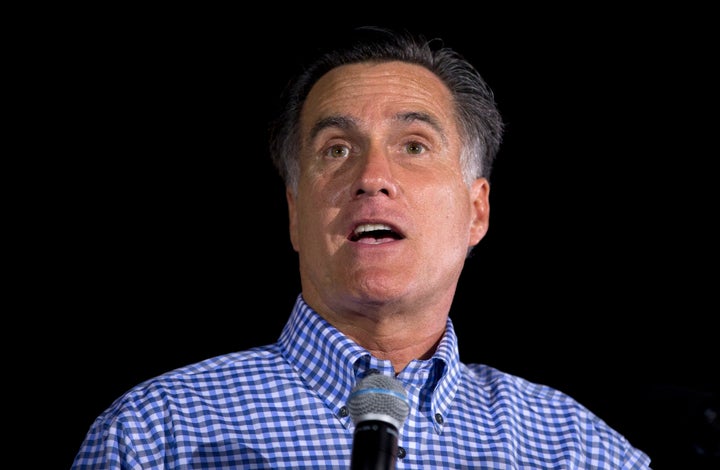
Mitt Romney describes an Oprah‐like moment during his governorship. He would ask students to reach under their chairs and remove an envelope that had been taped there:
"... they would read the part of the letter where they learned they'd earned an Adams Scholarship. The smiles turned into cheers and the sound was deafening. I got more hugs on Adams Scholarship day than I did at Christmas. Kids would bring me their cell phones so I could tell their parents the exciting news. And parents more than once told me that they had been worried they would not be able to afford college and that the scholarship would make a difference."
But Romney is no Oprah, and new research shows that his policies did real harm to Massachusetts students.
What Romney didn't tell the students is that while he had offered to pay for the tires, they still had to pay for the car. Mandatory fees were nearly three times tuition at the University of Massachusetts, Amherst, the state's flagship campus. Students who thought they were getting college for free discovered that they owed nearly $7,000 a year in fees. Moreover, during Romney's governorship, those annual fees rose by $2,800 ‐‐ more than the value of the tuition waiver.
And while Oprah gave her cars to poor people, Romney cut scholarships for low‐income students. In his first year in office Romney cut financial aid for the state's college and university students by 10 percent and then proposed level funding in each of his successive budget proposals. His final budget proposal would have left financial aid funding 30 percent below its 2001 level after accounting for inflation. The Adams Scholarship did not make up for these cuts because low-income students were about 30 percent less likely than the state average to earn and use an Adams Scholarship. Consistent with his record as governor, Romney now supports the Republican budget that would cut Pell grants, the most important federal need‐based aid for college students.
Even worse, the scholarship appears to have hurt a significant fraction of its recipients. A careful study by Joshua Goodman and Sarah Cohodes of Harvard University found that most of the recipients were strong students who would have attended college even without the scholarship. But the scholarship did convince some students who were eligible for the scholarship to attend state colleges and universities instead of private colleges and public colleges in other states.
Unfortunately, this wasn't a good idea. The cash‐strapped Massachusetts colleges and universities had lower graduation rates than the places the students would have attended without the scholarship. Goodman and Cohodes show that the "lucky" students who just barely did well enough to qualify for an Adam Scholarship were much less likely to graduate on‐time from a four‐year college than those who just missed qualifying ‐‐ Romney's policy reduced their graduation rate by 40 percent. Oprah gave brand‐new Pontiacs. Romney offered to pay for a small share of the cost of a clunker.
One goal of the Adams program was to get more strong students to graduate from Massachusetts colleges. Goodman and Cohodes show that Romney's program was a woefully inefficient way to accomplish this -- the state spent $800,000 per additional graduate. Why was it so hard to attract students to Massachusetts state colleges and universities and why was the graduation rate so low? Romney followed his predecessor's policies of starving public higher education.
When Romney took over, the higher education budget had already been cut by almost 10 percent over the previous two years. Yet, in his last year as governor, Romney proposed a budget for higher education that was lower than the budget he inherited, even before accounting for inflation. After accounting for inflation, Romney's final proposal for funding the University of Massachusetts was one‐sixth below its 2001 level.
Romney's Board of Higher Education reported that in 2007, it was underfunded by $400 million. In other words, when Romney left office, it would have taken an increase in state funding of over one‐third to appropriately fund public higher education in Massachusetts without a massive increase in fees and tuition. The Board reported that the state colleges and universities relied excessively on part‐time faculty, underfunded capital and were not providing academic, student services and institutional support at the level of their peers.
Romney's agenda for our country has the same misplaced priorities. While calling for trillions in new tax cuts for wealth taxpayers and a new defense buildup, Romney would cut domestic spending -- including higher education -- by 20 percent. And much deeper cuts would be needed to live up to his budgetary promises.
Rebuilding our middle class requires the hard work of investing in and nurturing critical infrastructure like our colleges. Telling kids that you will pay their tuition (but not their fees) to an under‐funded institution may get you a lot of hugs and make you feel good about yourself, but it is not the way to ensure a good future for our children.
Kevin Lang, a Professor of Economics at Boston University, was an elected member of the school board in Brookline, Massachusetts, when Romney was governor.